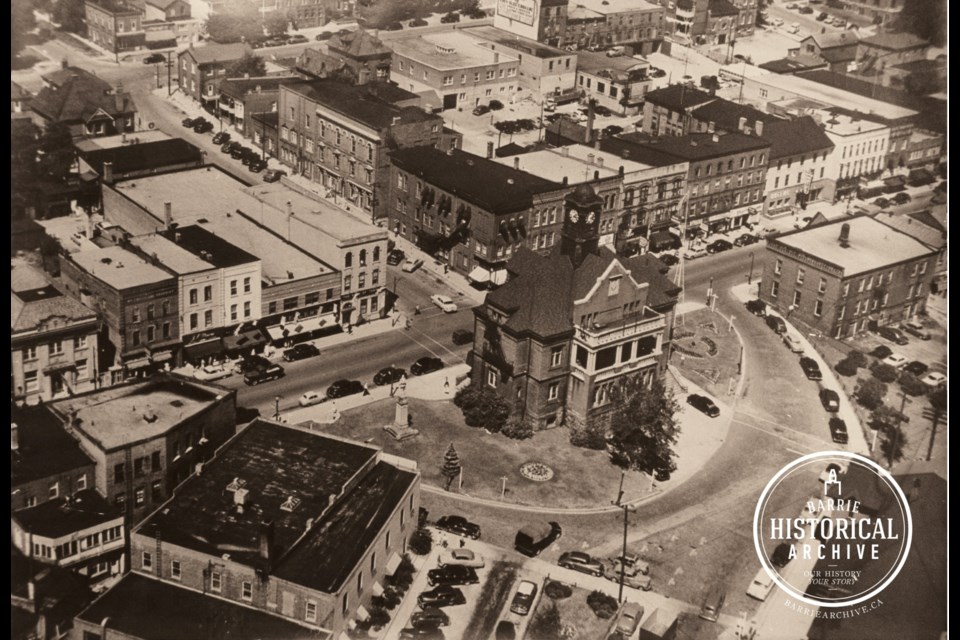Editor's note: The following is Part 2 of the Thomas Fox Davies story. To read part one, click here.
In Canada’s early years, having a local newspaper was the true mark of a civilized place and you were nobody without one. In the 1840s, there were very few pressmen in Canada, but the word had been spread to each of them that the fledgling village of Barrie needed a newspaper. Who would accept this challenge?
Thomas Fox Davies of the Globe in Toronto, likely the most adventurously spirited of them all, rejected the idea more than once. In time, he began to think about all the possibilities if the obstacles could be overcome.
With no real income guaranteed, Thomas Davies loaded a press and paper onto an ox cart and went to Barrie, 64 miles into the wilderness.
His first paper, the Barrie Magnet, was produced on a shoestring budget.
Newspapers then were entirely subscription-driven. If you had 14 subscribers, you printed 14 newspapers.
Barrie was not yet a cash society as a market building was still a dream. The economy was based mainly on lumber and farm produce. Lumber was floated away on waterways and farm produce was stored until muddy Yonge Street froze enough for goods to be taken by sleigh to Toronto.
It was at this point that the impoverished printer used his platform to agitate for a railway into the region. He was laughed at and branded a dreamer, but he didn’t give up and the railway came to Allandale eventually.
Davies rejoiced.
“I well remember the day when Gillespie, the mail clerk, ran over to Barrie and handed me the Globe, the first Toronto newspaper ever delivered here on the day of publication," he said.
It was obvious, after the arrival of the railway, that Mr. Davies had some influence. Articles that he produced about particular causes were often re-published by his old friends at the Globe in Toronto.
People began to ask Davies to take certain stances in his writings and they offered good money for that benefit.
But Davies would have none of it.
By 1852, the Magnet was in new hands and had a new name. Davies had sold his paper to Richard Oliver.
If the Barrie Magnet’s name was meant to represent the pulling of the brightest and strongest to the small town, the new name of the Northern Advance was intended to call attention to progressive spirit of the community.
Where Davies had tried to stay neutral when the Barrie Magnet was in his hands, Mr. Oliver took the rebranded Advance in a conservative direction.
This led to the creation of several new and often opposing publications.
Naturally, Thomas Davies did not stay idle. He had a hand in the legal periodical, Upper Canada Law Journal, and the Spirit of the Age, which was made to promote the causes of locally prominent Orangemen.
For a small community in an outlying area, Barrie had a surprisingly strong political presence in Upper Canada and its few citizens were eager supporters of print news, especially any publication that promoted their particular leanings.
The Northern Advance continued to thrive even as the Barrie Examiner appeared on the scene in 1864.
Other challengers arose from time to time, but never managed to compete for long with the two powerhouse papers of the town.
That suited Thomas Davies just fine. He could always get work. He returned to the presses of the Northern Advance and then to its rival, the Barrie Examiner, where he worked for quite a few years.
In 1890, the Northern Advance reported on a visit to its offices by the editor of the newly formed Sun newspaper of Owen Sound. The editor was a Barrie native who had apprenticed under Mr. Davies in the 1860s. He had come to Barrie to make connections with the local press and to pay his respects to his early mentor, Thomas Davies.
The Sun editor asked for directions to Mr. Davies’s final resting place so that he could spend a moment at the grave of a man he remembered as “a friend, kind-hearted and indulgent.” He got a double surprise. Not only was Thomas Davies still very much alive, but he was 71 years old and still working. They sent him to the Examiner office to see for himself.
A decade later, Davies took very ill and was not expected to live. The Grim Reaper had to go away empty handed on that occasion. Thomas Davies recovered and went back to work, this time at the Gazette created by Nathaniel King.
The father of Barrie’s press industry retired due to poor health in 1902, at the age of 83, and died the following year, concluding a rather remarkable life.
Each week, the Barrie Historical Archive provides BarrieToday readers with a glimpse of the city’s past. This unique column features photos and stories from years gone by and is sure to appeal to the historian in each of us.



